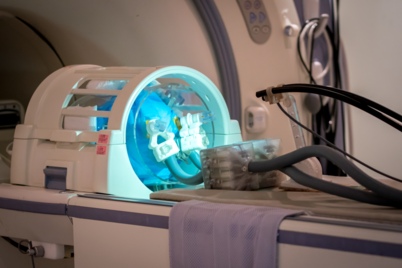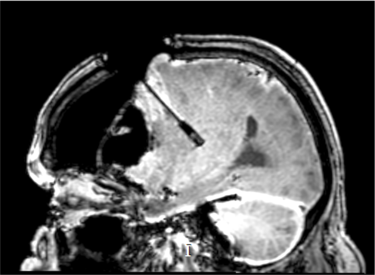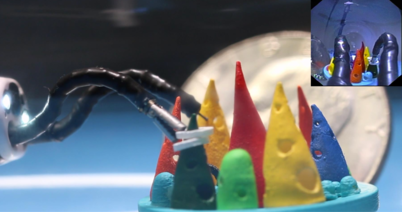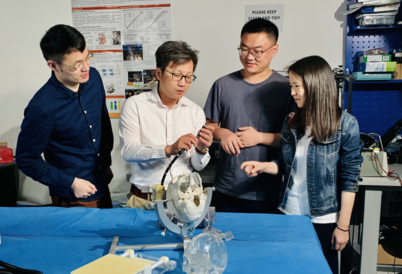Surgical Robots with New Eyes
My research is to open up a new dimension with new eyes to see through the body and organs, pinpointing the specific part of the body for safer and more precise robotic surgery.
Magnetic resonance imaging (MRI) is widely used in Hong Kong and around the world for diagnostic purposes, but the technology has huge and largely untapped potential for use in surgery. When coupled with new advances in robotics in the form of high-performance magnetic resonance (MR)-compatible actuation technology, it can provide surgeons with the means to perform highly precise surgeries while being guided by detailed views of the body, resulting in safer procedures, shorter operation times and lower costs.
In laparoscopy, or keyhole surgery, for example, surgeons must rely on a camera. “Somehow, surgeons can’t see very well the critical tissues underlying the surgical site,” explained Dr Ka Wai Kwok, Associate Professor of the Department of Mechanical Engineering. My research is to open up a new dimension with new eyes to see through the body and organs, pinpointing the specific part of the body for safer and more precise robotic surgery. I have a strong belief that MRI is a very unique medical imaging modality to do so.”
One of the most difficult types of surgery is stereotactic neurosurgery, which is used to treat cases of Parkinson’s disease, severe depression and essential tremor, among others or brain biopsy for gene therapy. The procedure involves the careful insertion of needles into deep parts of the brain. Precision is paramount: Perforating the wrong area of the brain can result in disastrous and irreversible consequences. It is particularly complex because the brain loses fluid and shifts during the procedure, which makes inserting the needles with precision even more difficult. Current procedures may take several hours since the stereotactic frame typically needs frequent manual adjustment but disrupts the workflow. To ease these conditions, Dr Kwok and his team have developed a small, high-performance MRI-guided robotic system that improves precision by leveraging MR-based tracking to provide real-time positional feedback directly in the MRI coordinates. The invention is safe for use in an MR environment as the robot actuators contain no metal, allowing for completely safe operation in the MRI without negative effect on imaging quality. The robot can be powered from the MRI control room at a distance of up to 10 metres.
Dr Kwok likens the use of imaging guidance to using GPS when driving a car, which allows for exact location precision as well as taking account of the online-updating map, compared with the pre-GPS era of asking a person for directions to a particular place.
The team is pressing on to develop more robots that can work in other minimally invasive procedures. His team has recently made a robot prototype in application of various endoscopies. “We have developed a robot arm in very small diameter that can pass through the conventional endoscope to resecting tumours such as in gastrointestinal (GI) tract,” he said.
Dr Ka Wai Kwok of the Department of Mechanical Engineering received the HKU Young Innovator Award 2020.






